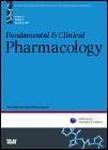版权所有:内蒙古大学图书馆 技术提供:维普资讯• 智图
内蒙古自治区呼和浩特市赛罕区大学西街235号 邮编: 010021

作者机构:Univ Tsukuba Dept Biostat Fac Med 1-1-1 Tennodai Tsukuba Ibaraki 3058575 Japan
出 版 物:《FUNDAMENTAL & CLINICAL PHARMACOLOGY》 (基础及临床药理学)
年 卷 期:2019年第33卷第3期
页 面:339-346页
核心收录:
学科分类:1007[医学-药学(可授医学、理学学位)] 10[医学]
基 金:JSPS KAKENHI [15K19219] Grants-in-Aid for Scientific Research [15K19219] Funding Source: KAKEN
主 题:Bayesian confidence propagation neural network method drug interaction Japanese Adverse Drug Event Report reporting odds ratio rhabdomyolysis signal detection
摘 要:Rhabdomyolysis is one of the most concerning complications of antidyslipidemic drugs. Most patients with dyslipidemia take multiple medications. Our objective was to explore which two-drug combinations lead to a higher risk of rhabdomyolysis. We analyzed data from the Japanese Adverse Drug Event Report (JADER) database between April 2004 and September 2017. The primary outcome was the report of rhabdomyolysis. We assessed the risk of rhabdomyolysis for the two-drug concomitant use of antidyslipidemic drugs (statin, fibrate, and ezetimibe) with antihypertensive and antidiabetic medications. The Noren and Gosho methods were used for detecting two-drug interactions. The JADER contained 468 292 records for patient characteristics, 2 973 172 drug information records, and 741 016 adverse reactions records. Rhabdomyolysis was reported in 5 017 patients. Concomitant use of pravastatin/fenofibrate, simvastatin/mefruside, fluvastatin/temocapril, bezafibrate/temocapril, bezafibrate/spironolactone, bezafibrate/metoprolol, bezafibrate/losartan, fluvastatin/mitiglinide, or fenofibrate/glibenclamide was detected as the signal of rhabdomyolysis in this analysis. Combination therapy with the drugs listed above has the potential of drug-drug interactions that could result in rhabdomyolysis in patients with dyslipidemia.